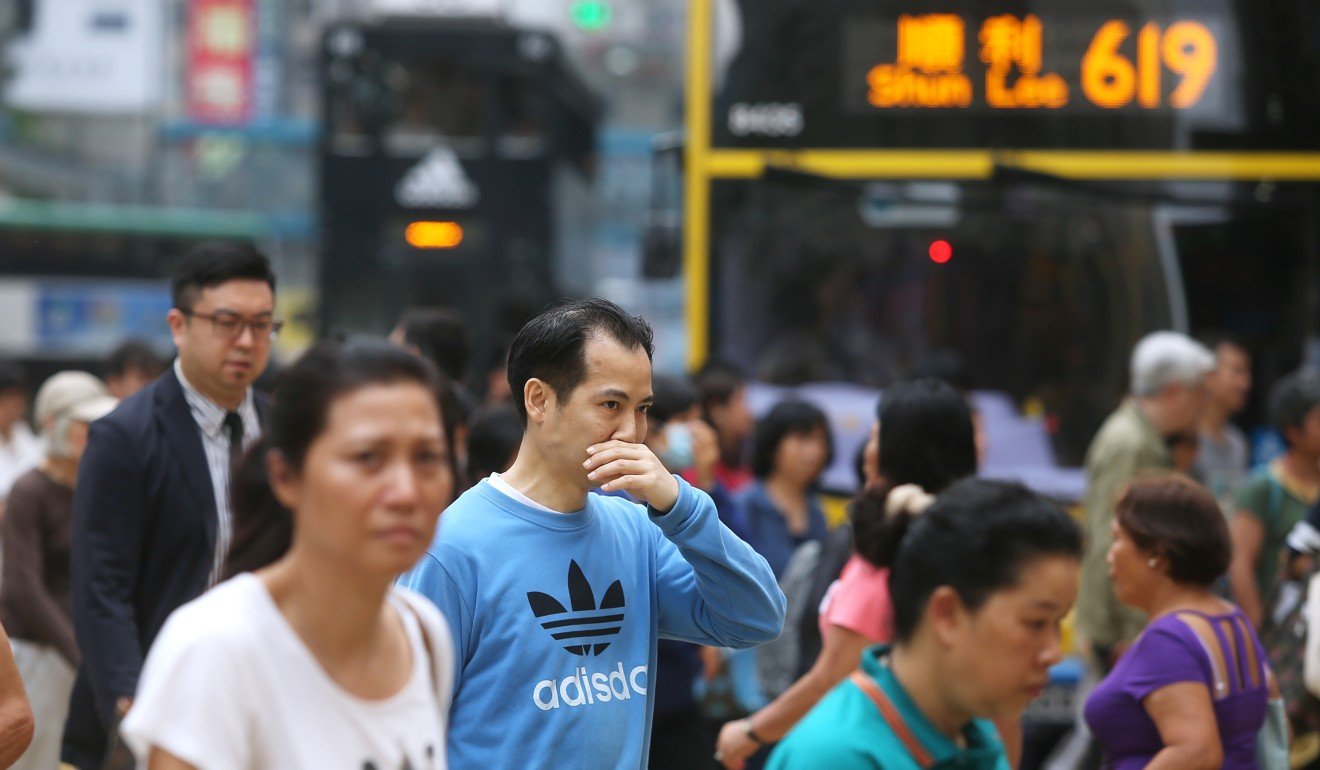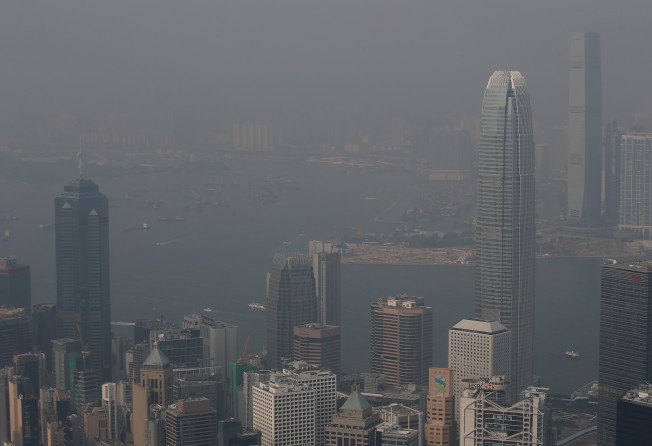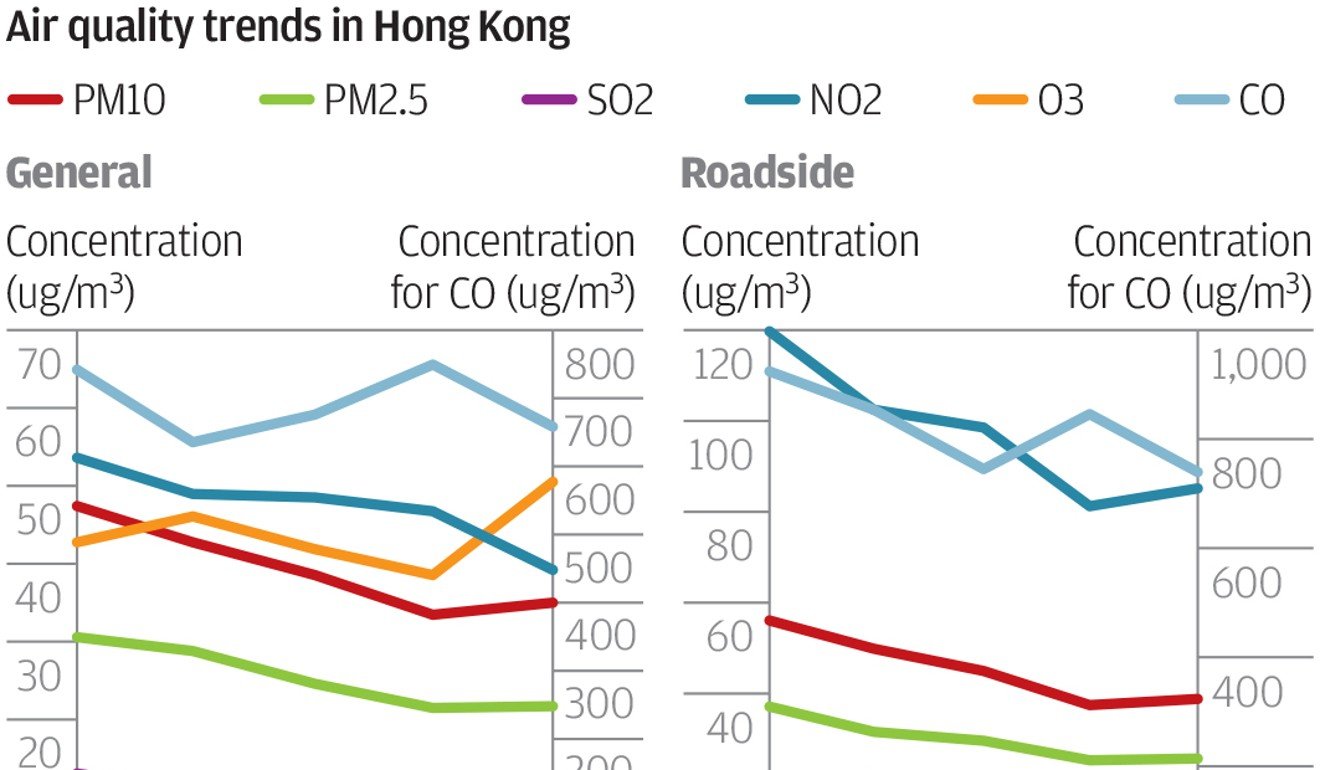
Warmer temperatures, less rain blamed for spike in bad air days in Hong Kong
Officials cite weather conditions but other environmentalists point finger at unchecked vehicle growth

Hongkongers endured nearly twice the number of days of unhealthy air last year compared with the previous year, according to government data released on Tuesday.
The increase came as hazardous ozone pollution reached decades-old highs and roadside air quality worsened.
The Environmental Protection Department cited “meteorological conditions” such as more sunshine, less cloud cover and rain, and slightly warmer temperatures for making it more favourable for ozone to form.
The number of hours when readings on the 11-tier Air Quality Health Index hit “7” or above at monitoring stations equated to 44 days last year, up from 26 days the preceding year.
At roadsides, about 55 days of high-risk air were measured compared with 31 days in 2016, likely because of the 5 per cent rise in harmful nitrogen dioxide (NO2) concentrations at street level and 3 per cent increase in respirable suspended particulates – also known as PM10.
Causeway Bay had the worst air quality, recording 69 days in which air quality index readings were at “7” or higher.

Average annual concentrations of ozone clocked in at 51 micrograms per cubic metre of air last year, a 19 per cent increase since 2013 and the highest level registered in nearly two decades.
Smog-inducing ozone is formed when nitrogen oxides and volatile organic compounds – emitted from vehicles, industrial activities and power plant emissions – mix in the air under sunlight. It is closely linked to regional pollution, and sources of volatile organic compounds can come from anywhere within the Pearl River Delta area. Northwesterly winds can also transport more pollutants from the region to Hong Kong’s western regions.
Citing figures from the Observatory, department assistant director Dave Ho Tak-yin said Hong Kong experienced 19 per cent more hours of bright sunshine last year, while mean temperatures for the year were about 1 degree Celsius higher.
“The rise in ambient ozone may have caused more nitric oxide in the air to react with ozone at roadside and create more NO2,” he said.
Prolonged exposure to ozone can irritate the eyes, nose and throat, and can worsen existing heart and respiratory conditions such as asthma. But despite the “complicated ozone situation”, Ho said air quality was actually getting better, if assessed on a five-year trend.

He said concentrations of five major ambient pollutants – respirable suspended particulates (PM10), fine suspended particulates (PM2.5), sulphur dioxide (SO2), carbon monoxide (CO) and NO2 – fell between 11 per cent and 38 per cent from 2013 to last year.
Asked whether the city’s growth in private cars were to blame for last year’s spike in high-risk days, Ho said the probability was “not high”.
“Private car growth shouldn’t be a factor because its always been going up … and 95 per cent of emissions are from commercial vehicles,” he said. “Scientifically, it is more likely to be the ozone.”
He said government measures had been working, such as taking 10,000 commercial vehicles off the streets as part of a plan to phase out 82,000 of the city’s most polluting diesel vehicles, while some 1,000 old franchised buses had been retrofitted with emissions-reducing catalytic converters.
Patrick Fung Kin-wai of the environmental group Clean Air Network said deteriorating roadside air quality was definitely the result of the uncontrollable growth of vehicles as it exacerbated traffic congestion and air pollution at street level.
“The [sustained] high level of roadside air pollution … is worsened by … ever growing transport volume and density, as well as lengthened commuting time due to traffic congestion, which all lead up to increasing health risks faced by daily commuters,” he said.
He called on the government to set up a new fund to make public transport fully electric – including buses, taxis and minibuses – and for transport, health and environmental authorities to work closer together to tackle the problem of roadside pollution.